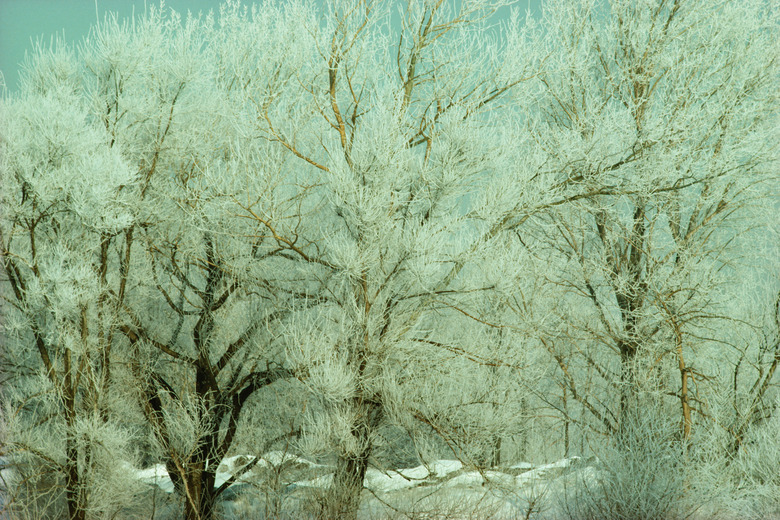How To Calculate Frost Point
Frost forms on objects when the water vapor in the air changes to solid or ice without going through the liquid stage. That process is called deposition or sublimation. Frost formation on the surface of objects depends on a complex atmospheric conditions as well as the shape of the object.
Step 1
Contrary to common opinion, frost is not frozen dew. Frost is a crystalline formation of small, thin ice crystals that form on objects when the air directly above the object reaches the frost point. The frost point is the temperature at which air can no longer hold its water in vapor state, and the air temperature reads close to or below freezing (32 degrees Fahrenheit). Frost formation greatly depends on the level of relative humidity in the air. Frost forms when the dew point reaches freezing point or lower and the air temperature equals or is less than the dew point temperature. When this happens, the dew point equals the frost point.
Step 2
Ideal weather conditions for frost to form are calm, clear, cold nights when the temperature drops to near or below freezing. Frost typically forms on low-to-the ground objects (grass) and cold objects (car roofs and windows) because the temperature of those objects is actually colder than the ambient air. At times, frost can form on objects even when the recorded air temperature is higher than freezing, because air temperatures are typically recorded approximately 4 feet above the ground.
Step 3
As more water vapor solidifies into ice on the surface of an object, frost grows heavier. A light frost may not damage grass or crops, but a heavy frost will kill even hearty plants. Protective micro climates can guard against frost. Plants near a building or under an eave are less likely to frost over than the same plant out in the open.
Step 4
The shape of an object also determines how frost will form on it. For example, a blade of grass has different topography on its top side and underside. Frost will form first on the coldest part of the blade and the lowest-lying part of the blade. By observing how and when frost forms on a single blade of grass, or a single leaf, it is easy to understand how frost forms in a larger environment of hills and valleys.
